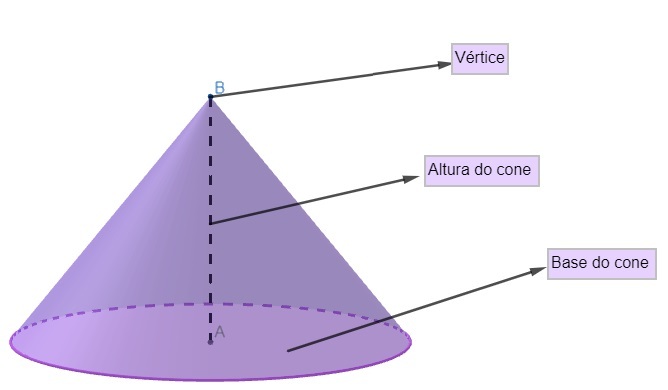A Mexican flag It is a National Symbol of the country. It is composed of three vertical stripes arranged in green, white and red, in that respective order starting from the mast. The colors symbolize the country's independence and the union of the Mexican people, while its coat of arms, located in the center of the pavilion's white central band, it makes reference to the historic city of Tenochtitlán, capital of Aztec Empire.
Read too: Flag of Brazil — the meaning of this splunger Nonational
Topics of this article
- 1 - Summary about the flag of Mexico
-
2 - Meaning of the flag of Mexico
- Mexico flag colors meaning
- Mexico flag shield meaning
- 3 - History of the flag of Mexico
- 4 - Mexico
- 5 - Curiosities about the flag of Mexico
Abstract about the flag of Mexico
The flag of Mexico is one of the country's National Symbols and represents the unity of its people and freedom.
-
It consists of three colors arranged in vertical bands: green, white and red.
Green always comes close to the mast, and represents hope.
White is in the central part of the flag and represents the union of the Mexican people.
The red one is at the other end, far from the mast, and represents the blood of the Mexicans who fought for the country's independence.
In the center of the vertical strip, also the center of the flag, is the shield of the flag.
The colors were resignified after the independence of the Mexico.
The shield of the flag of Mexico refers to the history and legends associated with the city of Tenochtitlán, capital of the Aztec Empire.
The Mexican flag appeared in 1821, and the version currently used was adopted in 1968, already with a new coat of arms and resignified colors as established in the mid-nineteenth century.
Flag Day is celebrated on February 24th in Mexico.
Mexico flag meaning

The flag of Mexico is one of the National Symbols of the Latin American country. She is composed of three vertical stripes of the same width, following this color scheme:
green, always close to the mast;
white, in the center;
red at the other end.
In the center of the pavilion, located in the central portion of the white band, is positioned the shield of Mexico. The first version of the Mexican flag was adopted during the country's struggle for independence, which took place in the first half of the 19th century. In this way, the flag of Mexico represents the freedom of the country and the unity of its people.
Do not stop now... There's more after the publicity ;)
Mexico flag colors meaning
As we have seen, the flag of Mexico features three vertical stripes, each with a color that has a particular meaning. Such meanings are present both in the symbolic and in the historical sphere, since the colors representfrogm the guarantee of fundamental rights that refersm to the struggle for Mexican independence. These fundamental rights are those expressed in the Plan of Iguala, also called the Plan of the Three Guarantees, established on February 18, 1821.
➝ Green: the color green is today a symbol of hope. In the historical past, the color represented Mexico's independence from Spain.
➝ White: the color white today represents the union of the mexican people. During the independence process, this coloring was a symbol of Catholicism. Its resignification came after the separation of functions between State and Church.
➝ Red: the red color is representative of the blood of those who lost their lives during the fight for Mexico's independence, called heroes of the homeland. However, at the beginning of the 20th century, red represented the union of the Mexican and Spanish peoples.
Mexico flag shield meaning
There are several interpretations for the meaning of the shield present on the Mexican flag. We present below an image in which it is possible to visualize the shield in all its details.

Developed in 1969 by two architects, the shield features an eagle devouring a rattlesnake and perched on a prickly pear cactus (nopal or palm), a typical species from Mexico. Just below this set of elements appear a lake and oak and laurel branches. One of the interpretations for the shield dates back to the Aztecs, pre-Columbian people who lived in central Mexico between the 14th and 16th centuries.
According to the legends of pre-Columbian peoples, the presence of an eagle on a cactus would indicate the ideal place for the installation of a city. This was the image that the Aztecs visualized in the region of lAug Texcoco, in the Valley of Mexico, which led them to build the city that would become the capital of the Aztec Empire, Tenochtitlán. The story of the foundation of the Aztec capital is just one of several possible interpretations for the Mexican coat of arms.
It is believed that the addition of the snake was influenced by beliefs brought by the Spaniards, as if it represented the fight between good and evil. Likewise, laurel and oak would be symbols of European origin.
Another reading of the shield indicates the representation of the deities of the pre-Columbian peoples. The eagle would be one of the ways in which the god Huitzilopochtli would manifest himself, he being the god of war and responsible for the Aztec people going to the region where the capital of the empire was erected. The serpent would represent the god of wisdom and learning, Quetzalcoatl, also present in other Mesoamerican cultures. The way in which the figures of the eagle and the snake appear on the shield would indicate a clash between these gods.
Read too:Flag of Argentina — the meaning of Sol de Maio between blue and white colors
Mexico flag history
the flag of mexico emerged during the country's struggle for independence, which, until the beginning of the 20th century, was a Spanish colony. The first official pavilion in Mexico appeared in 1821, designed by Agustín de Iturbide, a central figure in the country's emancipation and who served as emperor until 1823. The colors chosen for the flag, as we have seen, were based on the fundamental rights established in the Plan of Iguala.
With the end of the First Mexican Empire, in 1823, and the implantation of republic, transformations were made to the flag. The figure of the imperial crown that was part of the coat of arms was removed, with the addition of laurel and oak branches to represent the new form of government of the Mexico, while the resignification of colors took place in the mid-nineteenth century, during Benito Juárez's government, which lasted from 1858 to 1872.
A current version of the Mexican national flag, with the coat of arms made up of an eagle perched on a cactus, was adopted in the year 1968. Two decades later, on February 24, 1984, the Law on the Shield, Flag and National Anthem of Mexico was passed.
Mexico
Mexico is a Latin American country located in North America. With a wide territory bathed by the oceans Atlantic It is Pacific, establishes borders with the U.S, to the north, and with Guatemala It is Belize, South. The country is characterized by the presence of hot climates, ranging from tropical humid to arid, and mountainous relief. Depending on climatic events, Mexican vegetation varies between areas of steppes and deserts.
A Mexican economy is the second largest among countries of Latin origin, and is based on the petrochemical industry and mineral exploration, in addition to foreign trade and tourism. The country also stands out as being the second most populous in the Latin America, currently with 130 million inhabitants. Its capital is one of the largest cities in the world, Mexico City, home to 21 million people.
The Mexico presents a very rich and ancient history which originates from the Olmec peoples, Mayans, Toltecs and Aztecs, reflecting in its wide cultural tradition, internationally recognized and admired.

Facts about the flag of Mexico
The flag of Mexico is celebrated on the 24th of February.
On the first flag of Mexico, the stripes were diagonal.
It is located in the city of Piedras Negras, in the state of Coahuila, the largest flag in Mexico. It has dimensions of 60x34 meters, with a mast 120 meters high. The total structure has a weight of 160 tons.
“Juramento a Bandera” and “Toque de Bandera” are songs dedicated to the flag.
The Mexican flag was first used in 1822, a year after its adoption.
The flag must be displayed during the transmission of the Mexican national anthem on television.
By Paloma Guitarrara
Geography Teacher
Click on the link and access this text by Brasil Escola that brings information about one of the most famous pre-Columbian civilizations. The Aztecs settled in the Valley of Mexico region, building a great city – Tenochtitlán – and developing a rich culture. They were conquered in the 16th century by the Spaniards.
Click to read our text about the flag of Argentina and learn about the history of this important national symbol for the country. Understand the meaning of the Sun of May.
Know the main details of the flag of Spain! Learn the meaning of their colors and the Spanish coat of arms. Also learn the history of this flag.
Read our text about the flag of France and understand the meaning of this important national symbol. Discover how the flag was created and some curiosities.
Click and learn about the history of the flag of England, an important national symbol of the country. Compare it with the flag of the United Kingdom and find out the main differences.
Click and access this text to learn a little more about the National Flag. Get to know the history of the current flag of Brazil and understand the meaning of the colors.
Find out what the Canadian flag means. See key facts about the history of the Canadian flag and read fun facts about Canada's ultimate symbol.
Click here and learn all about the flag of the United States. Find out what its history is and know the meaning of its colors and shapes.



